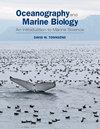Effects of climate-induced coral bleaching on coral-reef fishes - ecological and economic consequences
1区 生物学
Q1 Agricultural and Biological Sciences
引用次数: 576
Abstract
Global climate change is having devastating effects on habitat structure in coral-reef ecosystems owing to extreme environmental sensitivities and consequent bleaching of reef-building scleractinian corals. Coral bleaching frequently causes immediate loss of live coral and may lead to longer-term declines in topographic complexity. This review identifies coral cover and topographic complexity as critical and distinct components of coral-reef habitats that shape communities of coral-reef fishes. Coral loss has the greatest and most immediate effect on fishes that depend on live corals for food or shelter, and many such fishes may face considerable risk of extinction with increasing frequency and severity of bleaching. Coral loss may also have longer-term consequences for fishes that require live corals at settlement, which are compounded by devastating effects of declining topographic complexity. Topographic complexity moderates major biotic factors, such as predation and competition, contributing to the high diversity of fishes on coral reefs. Many coral-reef fishes that do not depend on live coral are nonetheless dependent on the topographic complexity provided by healthy coral growth. Ecological and economic consequences of declining topographic complexity are likely to be substantial compared with selective effects of coral loss but both coral cover and topographic complexity must be recognised as a critical component of habitat structure and managed accordingly. Urgent action on the fundamental causes of climate change and appropriate management of critical elements of habitat structure (coral cover and topographic complexity) are key to ensuring long-term persistence of coral-reef fishes.气候引起的珊瑚白化对珊瑚礁鱼类的影响-生态和经济后果
全球气候变化对珊瑚礁生态系统的生境结构造成了毁灭性的影响,因为它们对环境极为敏感,因而造成造礁珊瑚的白化。珊瑚白化经常导致活珊瑚立即死亡,并可能导致地形复杂性长期下降。本综述将珊瑚覆盖和地形复杂性确定为珊瑚礁栖息地的关键和独特组成部分,这些组成部分塑造了珊瑚礁鱼类的群落。珊瑚的消失对依赖活珊瑚作为食物或庇护所的鱼类有最大和最直接的影响,随着白化的频率和严重程度的增加,许多这类鱼类可能面临相当大的灭绝风险。珊瑚损失也可能对需要活珊瑚定居的鱼类产生长期影响,而地形复杂性下降的破坏性影响使这种影响更加严重。地形的复杂性调节了主要的生物因素,如捕食和竞争,促进了珊瑚礁上鱼类的高度多样性。许多不依赖活珊瑚的珊瑚礁鱼类仍然依赖于健康珊瑚生长所提供的地形复杂性。与珊瑚损失的选择性影响相比,地形复杂性下降的生态和经济后果可能是巨大的,但必须认识到珊瑚覆盖和地形复杂性都是生境结构的关键组成部分,并加以相应的管理。对气候变化的根本原因采取紧急行动,对生境结构的关键要素(珊瑚覆盖和地形复杂性)进行适当管理,是确保珊瑚礁鱼类长期生存的关键。
本文章由计算机程序翻译,如有差异,请以英文原文为准。
求助全文
约1分钟内获得全文
求助全文
来源期刊
自引率
0.00%
发文量
0
期刊介绍:
With increasing interest in the field and its relevance in global environmental issues, Oceanography and Marine Biology: An Annual Review provides authoritative reviews that summarize results of recent research in basic areas of marine research, exploring topics of special and topical importance while adding to new areas as they arise

 求助内容:
求助内容: 应助结果提醒方式:
应助结果提醒方式:


